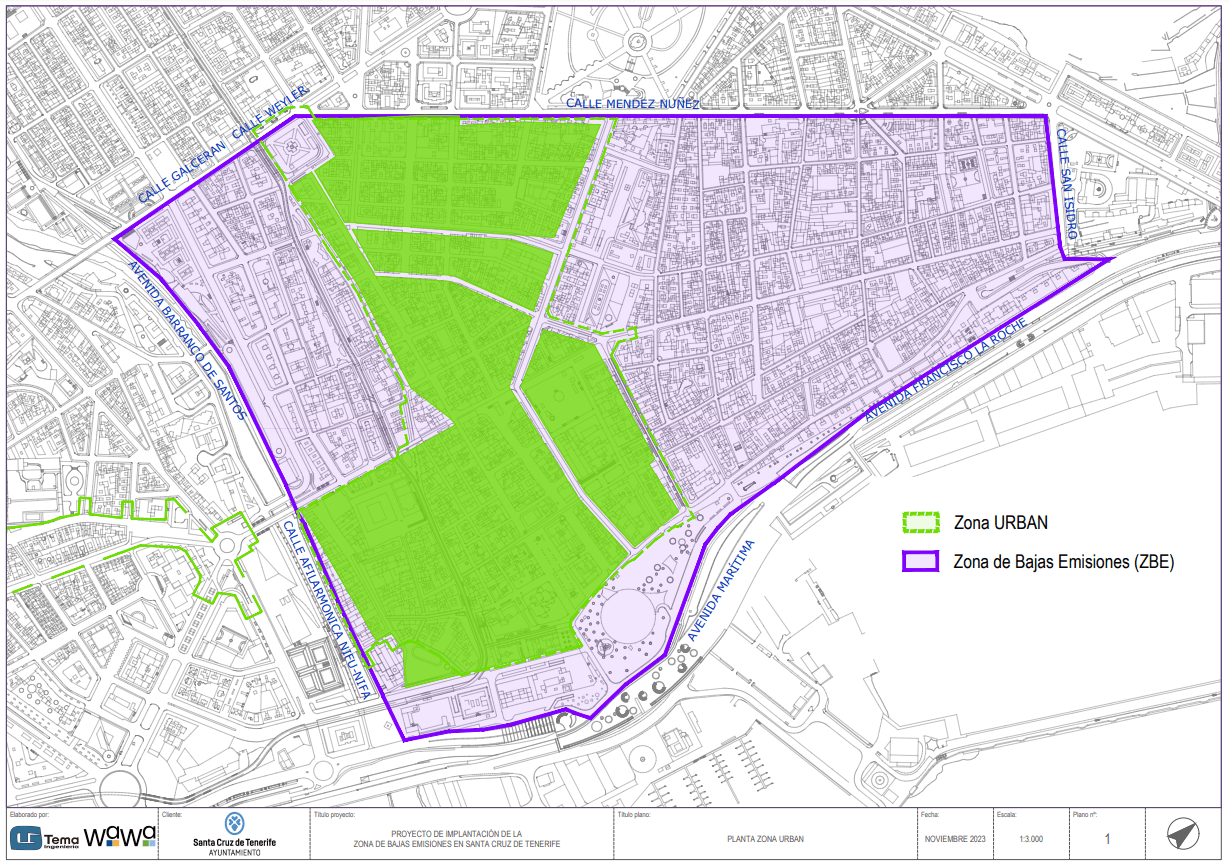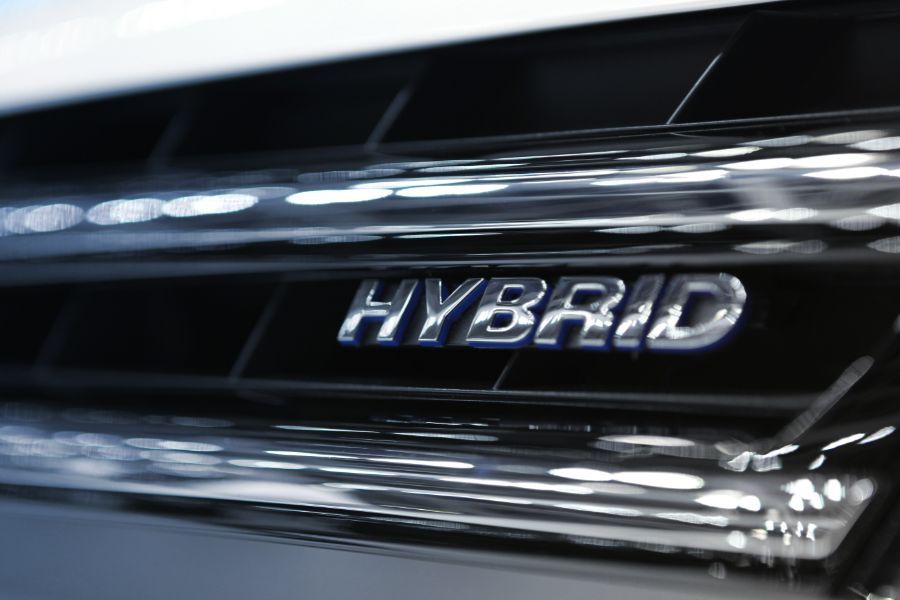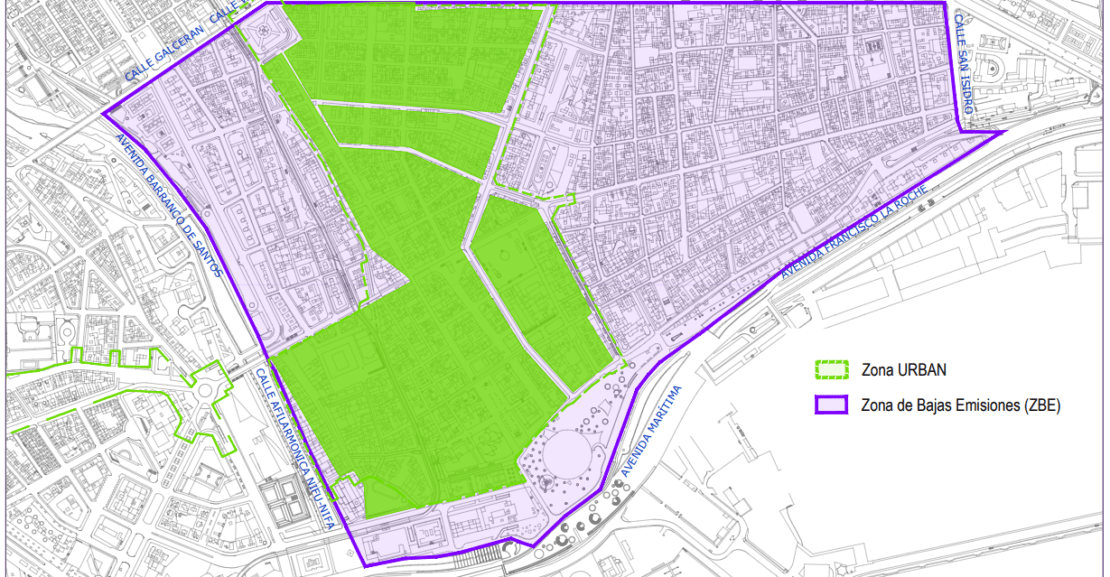Growing concern for the environment and air quality in urban areas has led many cities around the world to adopt sustainable mobility policies. One of the most promising initiatives in this area is the implementation of Low Emission Zones (LEZ). Tenerife, in its ongoing commitment to sustainability, is not lagging behind in the implementation of these strategies, especially considering its significant tourist influx and the need to preserve its natural resources and idyllic landscapes.
What are Low Emission Zones?
Low Emission Zones are designated areas in cities or towns where access to more polluting vehicles is restricted or regulated to improve air quality and promote a healthier environment. These restrictions are usually based on the types of vehicles, their age, engine technology or specific emissions of polluting gases.
The EPZs are supported by the Climate Change and Energy Transition Law, passed in 2021, which aims to reduce air pollution and greenhouse gas emissions in urban areas. This law is in line with the global decarbonization goals established in the 2015 Paris Agreement, seeking to promote cleaner and more sustainable transportation in cities by 2030 and 2050.
With the implementation of this law in 2023, cities with more than 50,000 inhabitants are required to implement these zones to control pollution. This affects 149 large municipalities in the country. In addition, municipalities with more than 20,000 inhabitants that exceed the pollution limits specified in air quality regulations must also establish Low Emission Zones, showing a clear commitment to environmental improvement in urban areas.
Application Criteria in Tenerife
The implementation of the ZBEs in Tenerife is based on a series of specific criteria designed to adapt to the particularities of the island. These criteria include:
- Zone Selection: Identify the areas most affected by vehicular pollution, which generally include urban centers with high traffic density such as Santa Cruz de Tenerife and San Cristóbal de La Laguna. The selection also considers areas with significant tourist affluence such as the municipalities of Arona and Granadilla de Abona.
Specifically in the city of Santa Cruz de Tenerife, he has provided a map showing the exact location of the ZBE.
- Type of Vehicles Affected: Vehicles that do not comply with certain emission standards, such as Euro 5/6 for diesel and Euro 3/4 for gasoline, will be more restricted or have limited access to these zones. This is in line with European trends in this area.
- Restriction Schedules: Establishing specific times during which restrictions apply, usually during peak traffic hours, can be an effective measure to decrease pollution without completely disrupting economic and social activity.
- Exemptions and Subsidies: Implement a system of exemptions for residents, essential services and vehicles with low or zero environmental impact, such as electric or hybrid vehicles. In addition, offer aid or subsidies for the renewal of vehicle fleets to cleaner technologies.
- Awareness and Education: Conduct awareness campaigns to educate the public on the benefits of EPZs and how they contribute to a greener and healthier island.
Expected Benefits of EPZs in Tenerife
The implementation of EPZs in Tenerife brings with it a number of tangible benefits:
- Improved Air Quality: Reducing the concentration of NOx, PM10 and other pollutants will significantly improve air quality, benefiting public health.
- Noise Reduction: Less traffic means less noise, which contributes to a quieter and less stressful environment.
- Promoting Sustainable Transportation: By restricting access to polluting vehicles, the use of more sustainable alternatives such as public transportation, bicycles or VMP is promoted.
- Increased Green Tourism: With a greener and more sustainable image, Tenerife can attract a segment of tourists who value destinations committed to environmental protection.
Challenges and Considerations
However, the implementation of EPZs is not without its challenges. Tenerife’s public transport infrastructure has been adapted and is presented as a viable alternative to the use of the private car. In addition, it is crucial that the measures taken do not simply shift the pollution problem to less regulated surrounding areas.
Towards a Sustainable Future
The EPZ initiative in Tenerife represents a bold step towards a more sustainable future. With careful planning and an inclusive approach, these zones have the potential to significantly transform the urban environment, making the island a healthier and more attractive place for residents and visitors alike.

Promoting Electric and Hybrid Vehicle Rentals with Eco Car Rent a Car
A crucial part of the success of the Low Emission Zones in Tenerife is the promotion of cleaner and more sustainable transportation alternatives. In this sense, Eco Car Rent a Caris positioned as an innovative leader on the island, offering a large fleet of electric and hybrid vehicles available for rent. By choosing to rent one of these cleaner vehicles, you are not only contributing to improved air quality and reduced urban noise, but you also enjoy a superior and economical driving experience, thanks to less dependence on fossil fuels.
Eco Car Rent a Car facilitates access to these green technologies, with conveniently located charging points and competitive rates that make electric vehicle rental an attractive option for tourists and residents alike. In addition, renting an electric or hybrid vehicle in areas where restrictions apply to the most polluting vehicles will allow you to move freely throughout all areas of the island, including the ZBEs, without worrying about the access limitations that affect conventional vehicles.
By choosing Eco Car Rent a Car, you are not only opting for an eco-friendly transportation option, but you are also supporting a local company that is committed to a more sustainable future for Tenerife. This is an excellent way to enjoy the beauty of the island, while actively contributing to its conservation for future generations.

